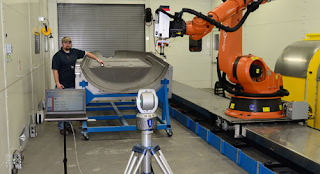Achieving Pinpoint Accuracy and Optimal Performance: The Importance of Robot Calibration
Robotics has revolutionized the manufacturing industry, making it faster, more efficient, and more precise. Robots have transformed how we manufacture products from simple repetitive tasks to complex operations.
However, robots are only as accurate as their programming and calibration. Robot calibration is an essential process that ensures robots perform their tasks accurately and efficiently.
What is Robot Calibration?
Calibration is crucial for any robot that performs precise or complex tasks, such as manufacturing or surgery. During calibration, the robot is tested against a known standard to determine any discrepancies in its movements. These discrepancies are then adjusted to ensure that the robot's movements are accurate and repeatable.
Why is Robot Calibration Important?
Robot calibration is essential for several reasons.
1. Accurate and Consistent Performance: Calibration ensures that the robot performs accurately and consistently, meeting the required specifications. Calibration adjusts the robot's mechanical and electrical parameters to ensure precise movement, positioning, and operation. This reduces errors and increases productivity, which is critical in applications such as industrial automation.
2. Enhanced Safety: Accurate calibration is crucial in ensuring the safety of the robot's operators and other workers in the workplace. Proper calibration ensures the robot's movements are controlled and its working range is defined. This reduces the risk of collisions, injuries, and accidents.
3. Improved Quality Control: Calibration enhances quality control by ensuring the robot's sensors, controllers, and actuators work correctly. This results in better product quality and reliability.
4. Cost Reduction: Proper calibration reduces the costs associated with robot maintenance, repair, and replacement. Ensuring that the robot operates precisely and consistently cuts the need for regular repairs and maintenance, which results in cost savings.
5. Increased Flexibility: Calibration enables the robot to perform a wide range of tasks and applications, making it more flexible and adaptable. By adjusting the robot's parameters, it can be configured to perform different tasks, allowing it to operate in various environments and applications.
6. Time Savings: Calibration saves time by reducing the need for manual adjustments and improving the robot's accuracy. This result in faster production cycles, increased throughput, and reduced downtime, resulting in significant time savings.
7. Improved Data Collection: Calibration improves the accuracy of data collection, enabling better analysis and decision-making. By ensuring that the robot's sensors and controllers are working correctly, accurate data can be collected and analyzed, allowing the optimization of processes and workflows.
Types of Robot Calibration:
• Joint calibration: This involves verifying and adjusting the robot's joints' position and movement. Joint calibration is essential for ensuring that the robot accurately performs its intended task.
• Tool calibration: This involves verifying and adjusting the robot's end-effector or tool to ensure it performs its intended task accurately. Tool calibration is essential for manufacturing processes that require precise positionings, such as drilling or milling.
• External calibration: This involves verifying and adjusting the robot's relationship with its external environment, such as verifying that the robot's vision system accurately identifies objects and that its sensors detect the correct data.
How is Robot Calibration Done?
Robot calibration is a complex process that involves several steps. The first step is identifying the robot's performance specifications and determining the appropriate calibration standards. This involves analyzing the robot's design, capabilities, and intended applications.
The next step is to prepare the robot for calibration physically. This involves cleaning the robot, removing any obstructions, and ensuring that the robot is correctly connected to the calibration equipment.
The calibration process involves measuring the robot's movements against a known standard. This is typically done using specialized equipment such as laser trackers, photogrammetry systems, or coordinate measuring machines. These devices measure and compare the robot's movements to the calibration standard, allowing technicians to identify discrepancies.
Once discrepancies are identified, the robot's movements are adjusted using software or hardware adjustments. The robot is then tested again to ensure its movements are accurate and repeatable.
Conclusion
Robot calibration is an essential process that ensures robots perform their tasks accurately and efficiently. By investing in regular robot calibration, manufacturers can improve their operations and achieve greater success in the market. Accurate calibration also enhances safety in the workplace, reduces the risk of errors and defects in products, and extends the life of the robot.



Comments
Post a Comment